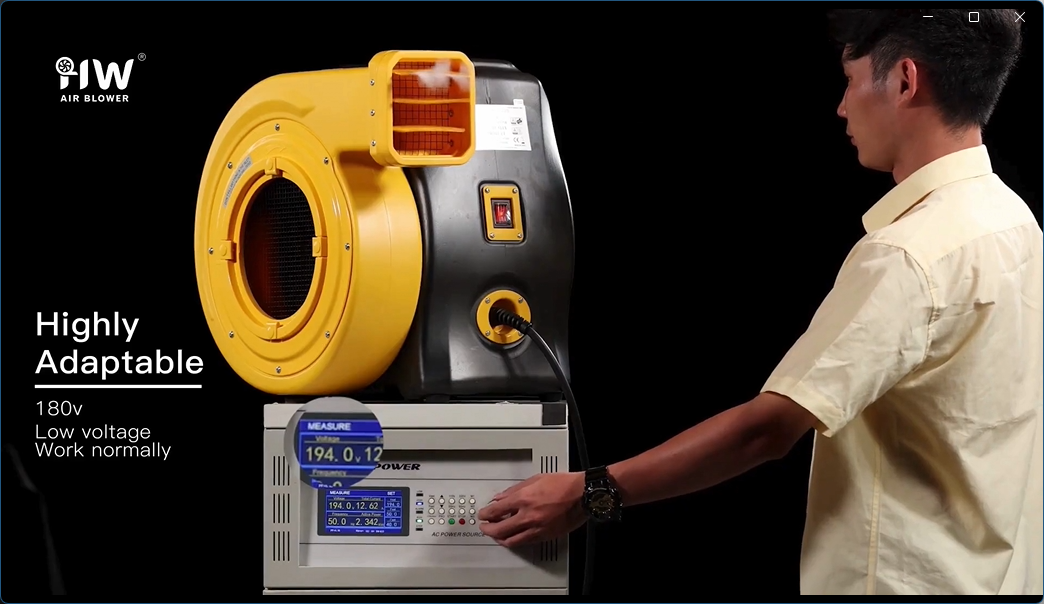The Future of Inflatable Technology: How the Huawei Air Blower is Leading Industry Innovation

Inflatable technology has come a long way, evolving from basic bouncy castles to complex obstacle courses, inflatable tents, and promotional structures used across industries. At the heart of this revolution are powerful air blowers that make setup faster, safer, and more energy-efficient. Leading the charge is the Huawei air blower, especially models like the Huawei REH-2E 2 HP, which is pushing the boundaries of what inflatables can achieve. Let’s explore how Huawei is shaping the future of inflatable technology and where the industry is headed.
1. Energy Efficiency: Sustainable Power for Inflatables
One of the biggest trends shaping the future of inflatables is energy efficiency. As inflatables become larger and more elaborate, the need for air blowers that use less power without compromising performance is growing. The Huawei air blower is leading the way by offering a low-energy design that delivers powerful airflow while minimizing electricity usage. This is particularly important for long events where inflatables need to remain inflated for hours or even days.
In Australia, where environmental sustainability is increasingly a priority, event planners, rental companies, and families are drawn to solutions that are both effective and eco-friendly. The Huawei REH-2E’s balance of power and efficiency is setting a new standard for the industry.
2. Smart Blower Technology: Automation and Monitoring
As technology advances, the future of air blowers lies in smart technology. Future air blowers are expected to feature automation and monitoring systems that adjust airflow based on the inflatable’s size, outdoor temperature, or weather conditions. Huawei, known for its innovations in tech, is well-positioned to incorporate these features in its next generation of blowers.
Imagine a Huawei air blower that automatically increases airflow when it detects air pressure drop, ensuring that inflatables stay perfectly inflated throughout the event. These intelligent blowers could even sync with mobile apps, allowing event organizers to monitor blower performance in real-time, receive alerts if there’s an issue, and control power remotely.
3. Noise Reduction: Silent Yet Powerful Operation
As inflatable usage expands into quieter settings like community festivals, corporate events, and private family functions, noise reduction becomes essential. Traditional blowers can be noisy, causing disruptions during speeches or quieter moments at events. Huawei is already making strides with quieter motor technology, and the future of the industry will demand even quieter operations.
The Huawei REH-2E blower is already known for its relatively quiet performance, but future models could integrate advanced sound-dampening materials and technologies. This would make inflatables more adaptable to all types of events, from lively outdoor festivals to peaceful weddings and corporate gatherings, without compromising power.
4. Safety Enhancements: Smarter and Safer Features
Safety is a key concern, especially for large commercial inflatables used by children. Future air blowers will likely include smart safety features, such as automatic shut-off systems that activate if the blower becomes unstable or overheated. Huawei, as a leader in tech, could integrate AI-based safety systems that detect potential risks, like air leaks or power fluctuations, ensuring smooth and safe operation throughout the event.
In an industry where safety regulations are tightening, Huawei’s future blowers will likely lead by offering safer designs that meet both local and global standards. This focus on safety will not only protect users but also reduce liability for rental businesses and event organizers.
5. Portability and Compact Designs
As inflatables become more portable for small-scale events and recreational use, air blowers will also need to evolve in terms of size and weight. The future of inflatable technology demands blowers that are more compact and easier to transport without sacrificing power. Huawei is already known for creating lightweight, easy-to-carry air blowers, and future iterations will likely push this further, offering even more portable designs ideal for quick setups and personal use.
In markets like Australia, where backyard parties and mobile event setups are common, having a lightweight blower that can be packed up and moved easily will be a game-changer. Families, small business owners, and mobile entertainers will all benefit from the portability of future Huawei models.
6. Customization and Modular Blowers
As inflatables diversify in size and function, air blowers will need to become more adaptable. One potential future innovation is modular air blower systems, where multiple blower units can work in tandem to inflate particularly large or complex structures. This would allow event organizers to scale their blower setup according to the size and requirements of the inflatable, providing more control over inflation speed and stability.
Huawei’s potential to lead in this space comes from its background in scalable technology solutions. A modular system could allow different blower units to communicate with each other, balancing airflow across multiple sections of a large inflatable, such as obstacle courses or inflatable mazes.
Conclusion: A Future Led by Innovation
The future of inflatable technology is bright, with air blowers at the center of innovation. As Huawei air blowers continue to evolve, we can expect to see advancements in energy efficiency, smart technology, safety, and portability. Whether for commercial event use or personal recreation, Huawei is setting the pace, making inflatables easier to set up, safer to use, and more versatile than ever before.
With these advancements, the Huawei air blower is not just keeping up with the industry but leading it into a new era of smarter, safer, and more efficient inflatable technology. The future is inflatable, and Huawei is shaping what that future will look like for users across Australia and beyond.